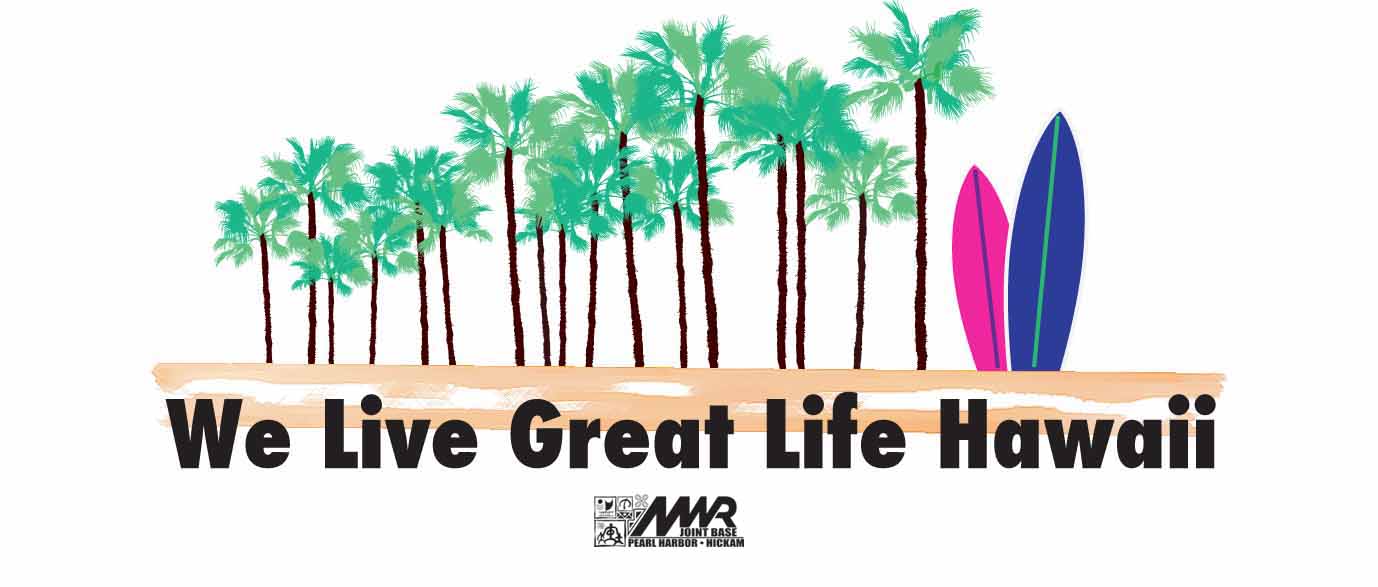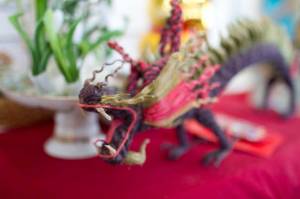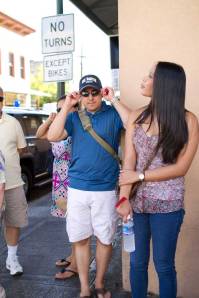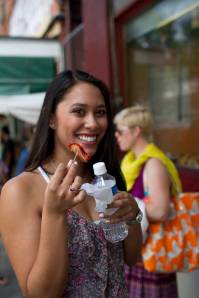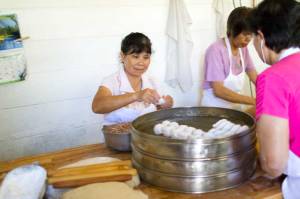With Hawaii’s unique cultural diversity right in your back yard, it is easy to discover different parts of the island from neighborhood to neighborhood. ITT offers a variety of local tours — the Chinatown Food and Historic Tour being one of them. On this walking tour discover the intriguing history of Honolulu’s Chinatown as you sample Chinese treats along the way. This unique walking tour explores historical buildings, open markets, Chinese-style bakeries and more.
I went on this tour for the first time in August and learned a lot about Chinatown that I didn’t already know. This tour is offered once a month and departs from the Hickam ITT office. A quick 15-minute bus ride and we ended up in the heart of downtown Honolulu where we begin your adventure. The first stop was the Hawaii Heritage Center. We discovered artifacts and exhibits that trace back to the early days of Chinese ancestry in Hawaii. After looking around we were given a 30-minute brief of the Chinatown history before we met up with your guide and departed on the walking tour.
Not every tour is alike, but generally the sites you’ll see include:
- The statue of Sun Yat Sen in the Chinese Cultural Plaza – Sun Yat Sen was the first provisional president when the Republic of China was founded in 1912. He spent his youth living and studying in Honolulu.
- Shung Chong Yuen Bakery – A delicious stop on the tour. This Chinese bakery, which remains much unchanged after 43 years, is famous for their puffed rice, moon cakes, peanut candies and macadamia nut brittle.
- Hotel Street – In the late 1800’s a great fire spread throughout eight blocks in Chinatown. See some of the structures that were rebuilt out of brick according to new regulations. During the 1940’s Chinatown was the main entertainment center for plantation workers and military personnel. Hotel Street was known as the red light district and housed brothels as well as theaters, bars, tattoo parlors and swing and jazz clubs.
- Lei Shops – Visit a few of the many lei shops on Mauna Kea Street. You’ll find the best variety of fresh flowers and leis at the best prices.
- Mauna Kea and Oahu Marketplaces – These outdoor marketplaces are made up of several souvenir shops that sell crafts, clothing and jewelry. You’ll also find produce stalls that sell locally grown fruits and vegetables, even fish, chicken and pork – from head to toe! A food court with different ethnic dishes can also be found.
- Char Hung Sut Manapua Factory – This restaurant has been open for over 50 years and you can see the cooks hard at work making some of the island’s best manapua (steamed or baked bread filled with a char siu pork filling). Don’t forget to pick up a sample before you leave!
After all the walking, we ended the day with a delicious and traditional Dim Sum lunch at Golden Palace Seafood Restaurant. You’ll be able to eat many of the traditional Chinese dishes, such as char siu manapua, fried rice, beef and broccoli with cake noodle, sweet and sour pork, and much more!
The next available tour will be held on Saturday, Sept. 29 from 8:45 a.m. – 1:30 p.m. Cost is $25 for adults and $20 for children, which includes a round-trip shuttle from Hickam ITT, guided tour and Dim Sum lunch.
For more information call 448-2295 or any of our ITT offices or visit www.greatlifehawaii.com.
